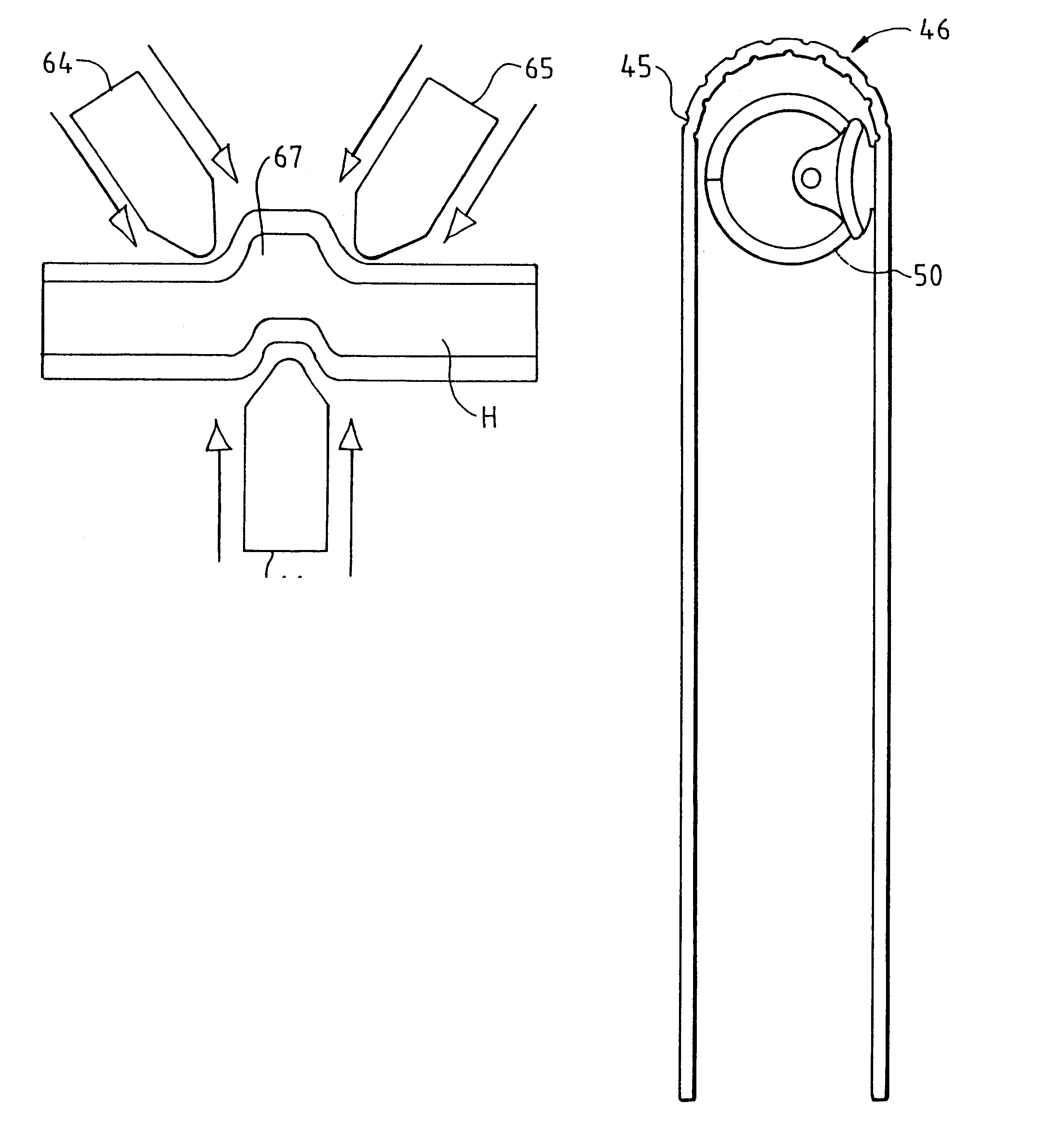Unibody binder and the process of making the binder
a binder and body technology, applied in the field of binder, can solve the problem of reducing the life of the binder
- Summary
- Abstract
- Description
- Claims
- Application Information
AI Technical Summary
Benefits of technology
Problems solved by technology
Method used
Image
Examples
Embodiment Construction
In FIG. 2 there is illustrated the novel unibody binder construction 40 in which the primary component consisting of a single piece of board 41 of uniform thickness that is formed into front and back covers 42, 43 by a hinge construction 44 consisting of a series of longitudinally extending creases 45 that are pressed into the board 41 and formed into a rounded spine section 46. A three ring mechanism 50 is secured by rivets (not shown) to the back cover 43. There is no reduction in the thickness of board 41 in any section thereof. While a three ring mechanism has been illustrated this is by way of example only since it can be two ring, four ring etc.
The unibody construction used to form the binder consists of the flat board 41 that is made into a sandwich between two sheets of plastic material 51, 52 that are secured to the board by welding and / or stitching and / or gluing before the spine is formed by creasing and the ring mechanism inserted. The novel process for forming a plastic ...
PUM
| Property | Measurement | Unit |
|---|---|---|
| mass | aaaaa | aaaaa |
| sizes | aaaaa | aaaaa |
| heat-sealed | aaaaa | aaaaa |
Abstract
Description
Claims
Application Information
 Login to View More
Login to View More - R&D
- Intellectual Property
- Life Sciences
- Materials
- Tech Scout
- Unparalleled Data Quality
- Higher Quality Content
- 60% Fewer Hallucinations
Browse by: Latest US Patents, China's latest patents, Technical Efficacy Thesaurus, Application Domain, Technology Topic, Popular Technical Reports.
© 2025 PatSnap. All rights reserved.Legal|Privacy policy|Modern Slavery Act Transparency Statement|Sitemap|About US| Contact US: help@patsnap.com



